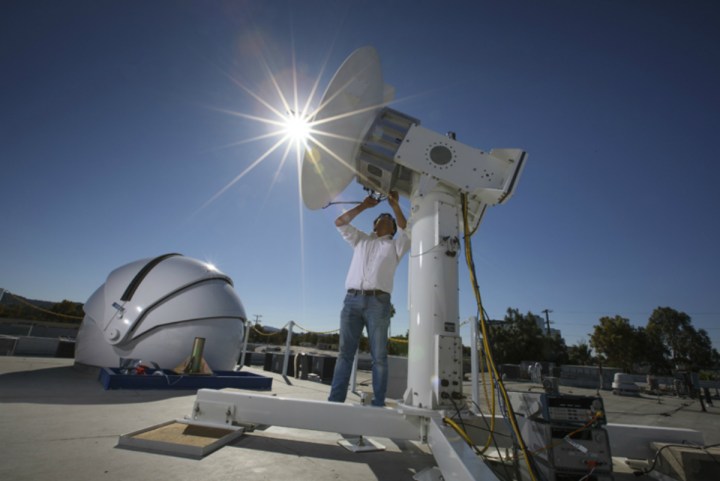
MMW is a point-to-point transmission technology, which makes it difficult and uneconomical to use for individual residential connections. Because of its potential data capacity, however, MMW is highly suitable for connecting internet service to distribution points. In a point-to-point land-based test from a mountaintop in Malibu, California to a building rooftop in Woodland Hills, a line-of-sight distance of 13.2 km (8.2 miles), the Connectivity Lab achieved a data rate of nearly 20 Gbps.
To grasp the capacity of the Facebook transmission, 20 Gbps is sufficient to stream almost 1,000 ultra-high-definition videos simultaneously, according to the Connectivity Lab. On the power side of the equation, the MMW test had a combined power consumption of only 105 watts of direct current (DC).
The Facebook demonstration bested the previous record set in May by German scientists, of 6 Gbps over 37 km. Engineers from the University of Southern California Viterbi School of Engineering attained a higher speed of 32 Gbps, but only across 2.5 m (8.2 feet), reports International Business Times. A team of Japanese researchers hit 100 Gbps in February 2016 by batching multiple 10 Gbps signals, but not in the MMW spectrum.
The Connectivity Lab’s success has implications for ground-based backup networks and for air-to-ground connectivity. Facebook’s Aquila solar-powered UAV is a current focus for providing air-to-ground internet access in remote areas around the world. According to the Connectivity Lab team, the goal for Aquila is to support a data capacity greater than 30 Gbps over 30 to 50 km (19 to 31 miles).
Flight tests have already started for the Connectivity Lab’s first generation of air-to-ground bidirectional 20 Gbps transmissions. The next generation, which the Lab expects to test in early 2017, will be air-to-ground simultaneous uplink and downlink 40 Gbps communications between an aircraft and a ground station.
Wireless keeps getting faster, but there’s still a lot of work to be done. MMW advances are coming fast and furious, however, advanced by Facebook’s work and Mark Zuckerberg’s desire to connect everyone.




